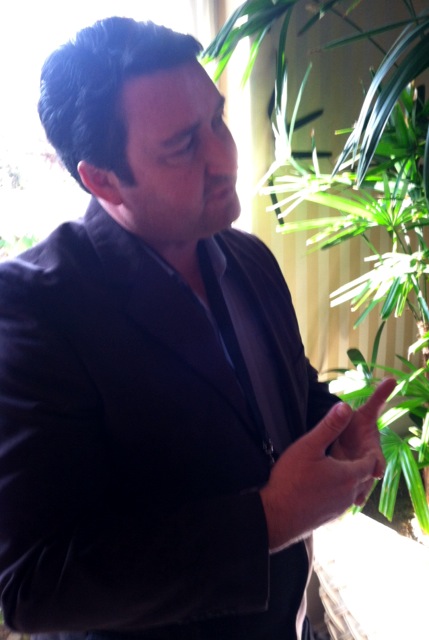I made a couple of new friends at this particular event. Winemaker Theresa Heredia (below, right) was present at the Gary Farrell table, having taken over the cellar in May 2012. Heredia and General Manager Nancy Bailey (below, left) both related the story of their wines to me in such a way that their excitement and passion could not be hidden.
The two presented a formidable tag team of information, with Heredia pouring the Chardonnay she blended and Bailey pouring the Gary Farrell Pinots for me.
Gary Farrell was a pioneer in the Russian River valley. He and Joe Rochioli, Jr. blazed the Russian River trail for Pinot Noir and Chardonnay. Rochioli ripped up French Colombard vines to plant Pinot Noir in the early 1970s, a time when the lack of hindsight made that seem like the raving of a crazy man. Time has proven him correct, though. Farrell's first wine under his own name was a 1982 Rochioli Pinot Noir.
Here is what was on the tasting table:
2011 Russian River Selection Chardonnay, Russian River Valley, Sonoma County $35 - Heredia got her feet wet with this wine - she got to do the blending on it. The wine has a nice touch of oak, 40% in barrels for seven months. Even though the oak is sweetly on the forefront, she plans on reigning in the use of oak in her vintages.
2011 Russian River Selection Pinot Noir, Russian River Valley, Sonoma County $45 - Cranberry and raspberry flavors follow a delicate floral nose.
2011 Hallberg Vineyard Pinot Noir, Green Valley of Russian River Valley, Sonoma County $55 - Bailey explained that Green Valley is about ten degrees cooler than the land just ten minutes north toward Dry Creek Valley. Cool climate notes like leather and bacon come forward in the nose, while the acidity is fantastic. Available only at the winery.
2011 Hallberg Vineyard Dijon Clones Pinot Noir, Green Valley of Russian River Valley, Sonoma County $60 - Lighter aromas and mouthfeel mark this wine as distinct from its vineyard sibling. Available only at the winery.
2011 Rochioli Vineyard Pinot Noir - From that warmer area ten minutes north of the Hallberg Vineyard. More red fruit shows up here, along with roses and black tea.
2011 Bacigalupi Vineyard Pinot Noir - This vineyard is even further north toward Dry Creek Valley than Rochioli. The wine is more masculine, showing a bigger mouthfeel and more tannins.
Follow Randy Fuller on Twitter










